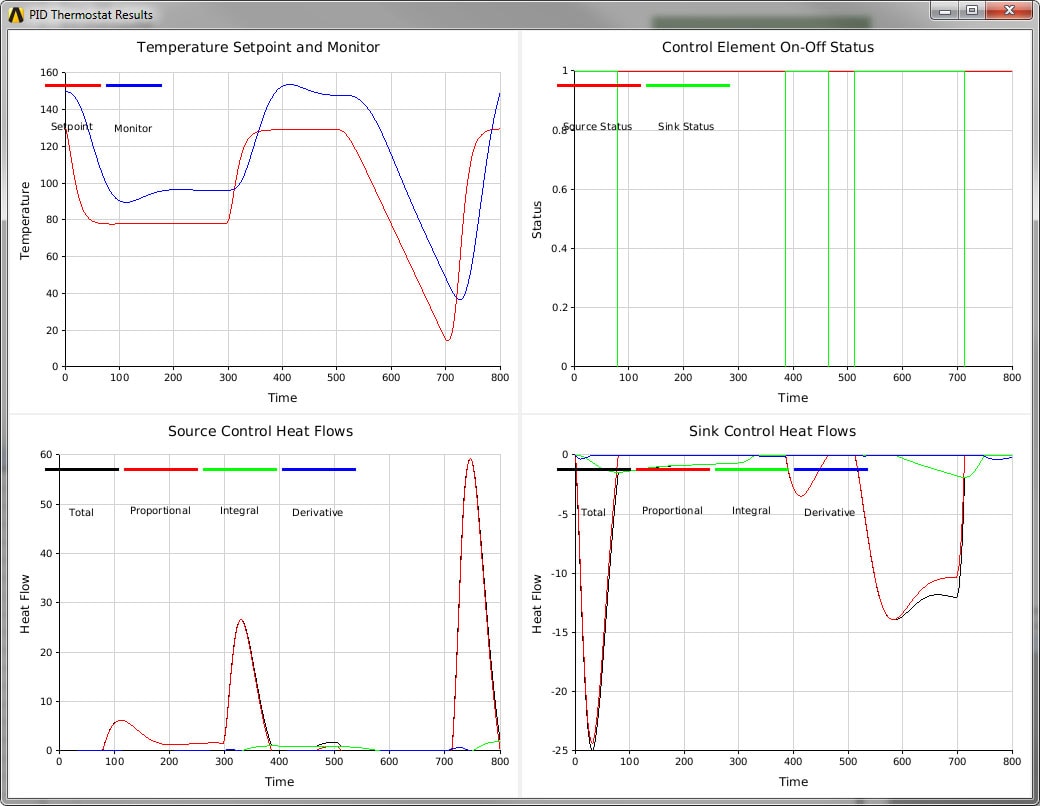Editors Note (2/2/2023): The version of this ACT Extention on the Ansys Store stopped working and we took it down in 2022. However, we do have a newer version available here on the PADT Blog. Read about it in “Ansys ACT Extension for a PID Thermostat Controller – Updated, February 2023“
PADT is pleased to announce that we have uploaded a new ACT Extension to the ANSYS ACT App Store. This new extension implements a PID based thermostat boundary condition that can be used within a transient thermal simulation. This boundary condition is quite general purpose in nature. For example, it can be setup to use any combination of (P)roportional (I)ntegral or (D)erivate control. It supports locally monitoring the instantaneous temperature of any piece of geometry within the model. For a piece of geometry that is associated with more than one node, such as an edge or a face, it uses a novel averaging scheme implemented using constraint equations so that the control law references a single temperature value regardless of the reference geometry.
The set-point value for the controller can be specified in one of two ways. First, it can be specified as a simple table that is a function of time. In this scenario, the PID ACT Extension will attempt to inject or remove energy from some location on the model such that a potentially different location of the model tracks the tabular values. Alternatively, the PID thermostat boundary condition can be set up to “follow” the temperature value of a portion of the model. This location again can be a vertex, edge or face and the ACT extension uses the same averaging scheme mentioned above for situations in which more than one node is associated with the reference geometry. Finally, an offset value can be specified so that the set point temperature tracks a given location in the model with some nonzero offset.
For thermal models that require some notion of control the PID thermostat element can be used effectively. Please do note, however, that the extension works best with the SI units system (m-kg-s).





















